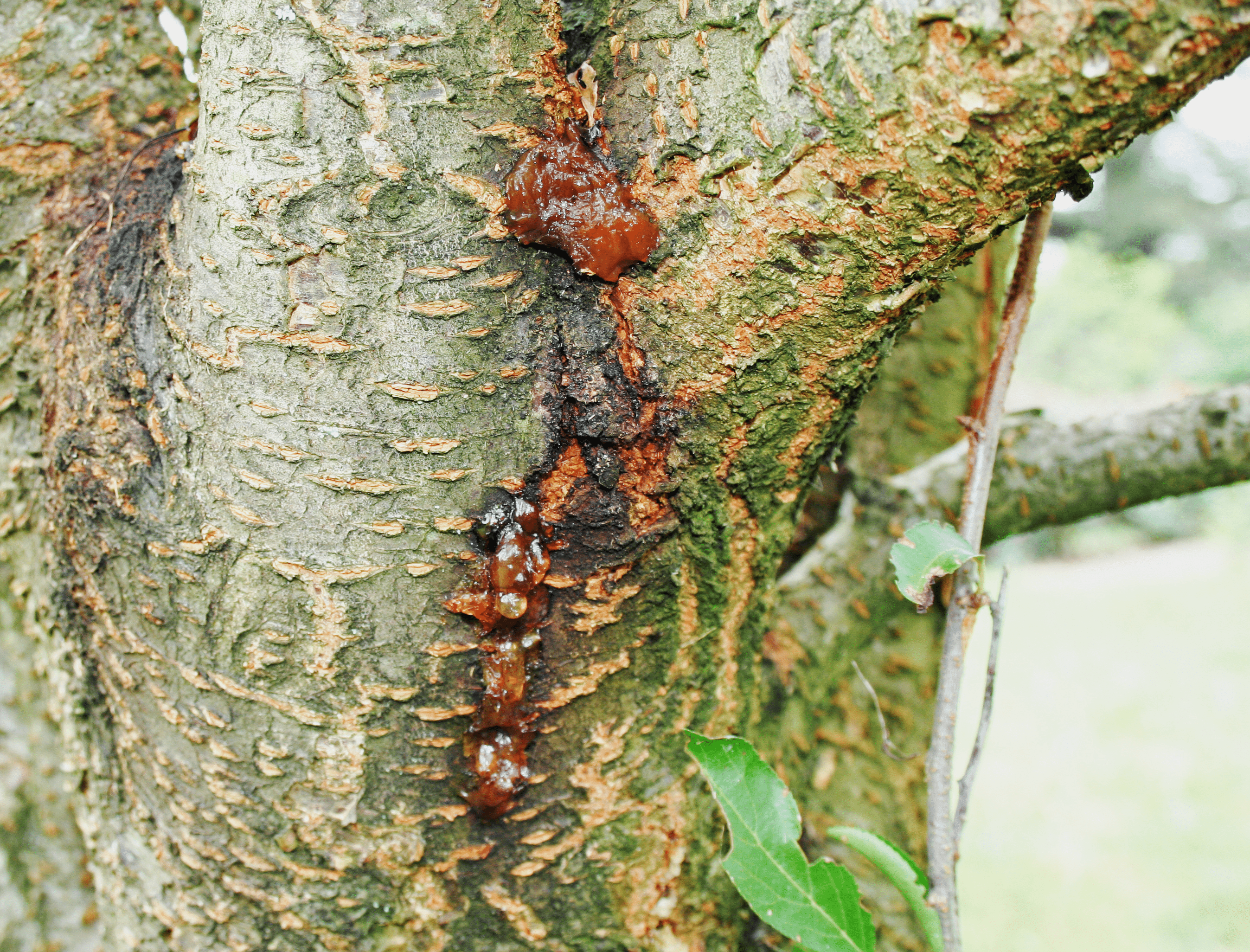Plum Tree Problems – Why A Plum Tree Is Bleeding Sap


Plum trees are normally relatively sappy trees, so a little sap leaking from plum trees may not be a reason for alarm. However, if you notice your plum tree is bleeding sap, your tree may have a problem that should be solved as soon as possible.
Reasons a Plum Tree Has Sap Oozing from Trunk
Diagnosing plum tree problems shouldn’t be taken lightly because a proper diagnosis may save your tree. It’s best to contact an arborist for an accurate diagnosis, or you can call the Cooperative Extension Service in your area. There are a number of factors that may be to blame when a plum tree has sap oozing from its trunk.
Environmental Problems
Hot, dry conditions in summer or sunscald in winter can stress the tree and may be the cause for a plum tree oozing sap. Similarly, repeated overwatering can also weaken the tree and cause plum tree problems.
Disease
Cytospora canker is a type of common fungal disease that often affects trees weakened by drought, severe weather, or injury caused by improper pruning or a lawnmower blade. If your plum tree is bleeding sap, it may be affected by canker, or by other forms of fungal or bacterial diseases.
Pests
Several types of borers, like peach tree borers, can infect plum trees. Borers are easy to distinguish from disease because the sap is mixed with frass (the debris and fecal matter left behind by boring insects). Borers can affect healthy trees, but they are more common on trees that are weakened by drought, sunscald, or injury. Aphids and other pests can also cause sap to drip from the branches.
Mechanical Injury
Trees often ooze sap at a spot injured by lawn and garden equipment.
Fixing Plum Tree Problems
Once you determine the problem, the solution may involve improved maintenance, environmental modifications, or other non-chemical approaches. Some pests may require chemical control. To prevent mechanical damage, be careful when using mowers, weed trimmers, or other lawn equipment. Disease often enters the tree through the damaged bark. Trim your tree properly in late winter/early spring for young trees and around midsummer for older, established ones. Dispose of any damaged branches properly to prevent the spread of disease – preferably by burning. Water your plum tree adequately as well.
Gardening tips, videos, info and more delivered right to your inbox!
Sign up for the Gardening Know How newsletter today and receive a free copy of our e-book "How to Grow Delicious Tomatoes".

A Credentialed Garden Writer, Mary H. Dyer was with Gardening Know How in the very beginning, publishing articles as early as 2007.
-
 How To Make A Bouquet Garni Or Herb Bundle For Cooking
How To Make A Bouquet Garni Or Herb Bundle For CookingIf you’re a great cook, you may have made an herb bundle before. If this is a new idea, learn how to add sparkle and interest to your dish with a bouquet garni.
By Amy Grant
-
 ‘Coral Charm’ Peony Care For Sublime Semi-Double Peonies With Lush Salmon Pink Flowers
‘Coral Charm’ Peony Care For Sublime Semi-Double Peonies With Lush Salmon Pink FlowersPeonies are known for their soft baby pink or magenta tones, but if plushy coral blooms are your thing, here’s our guide to the ultimate ‘Coral Charm’ peony care
By Tonya Barnett